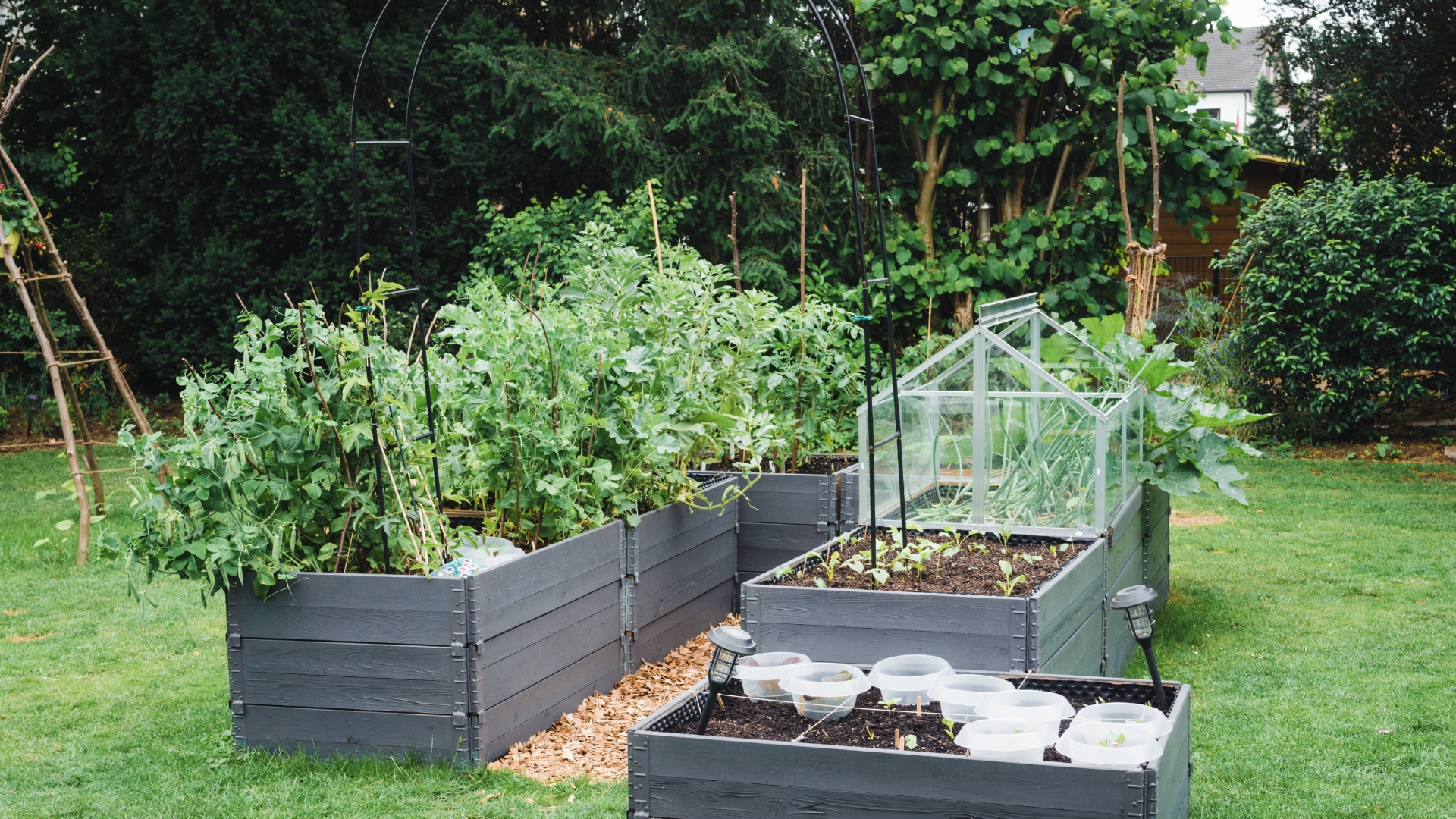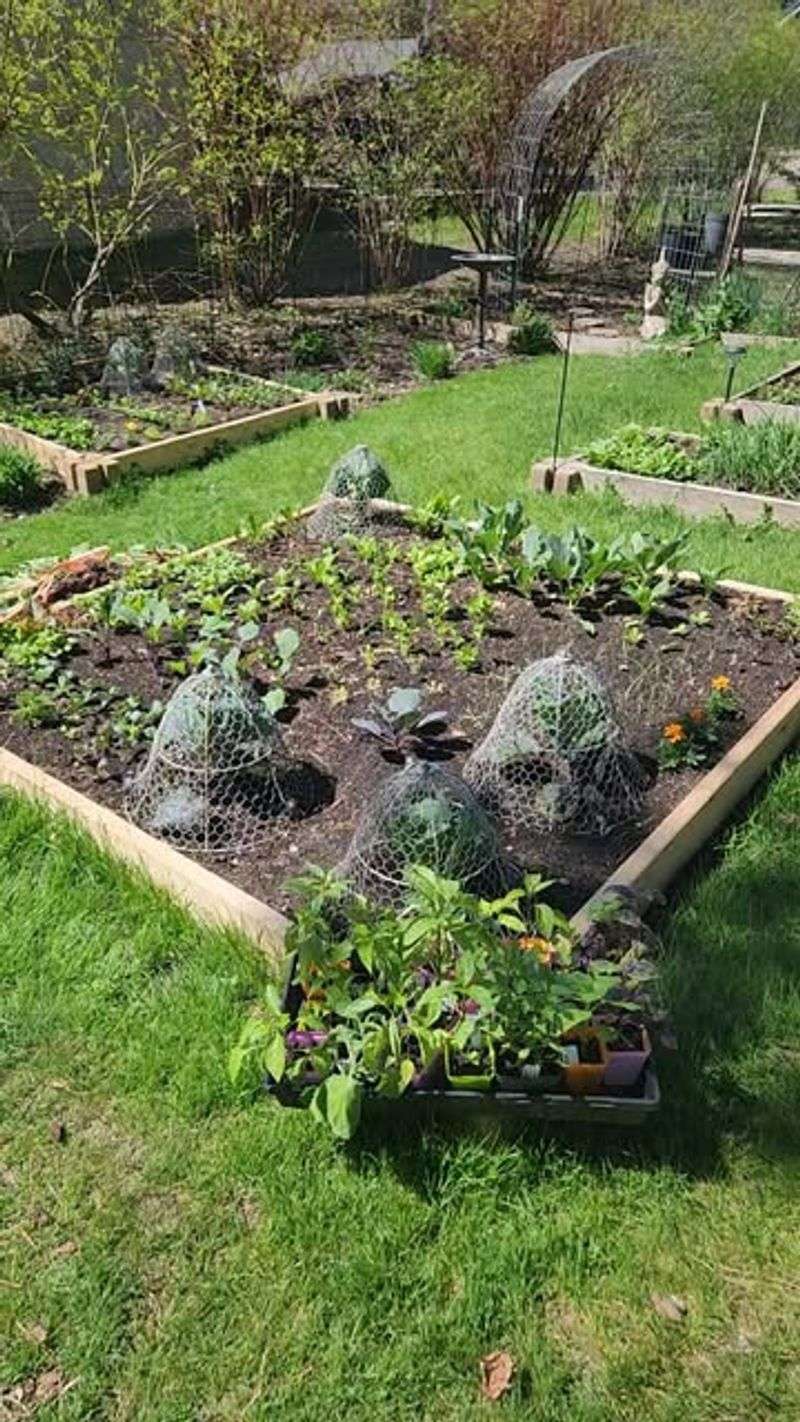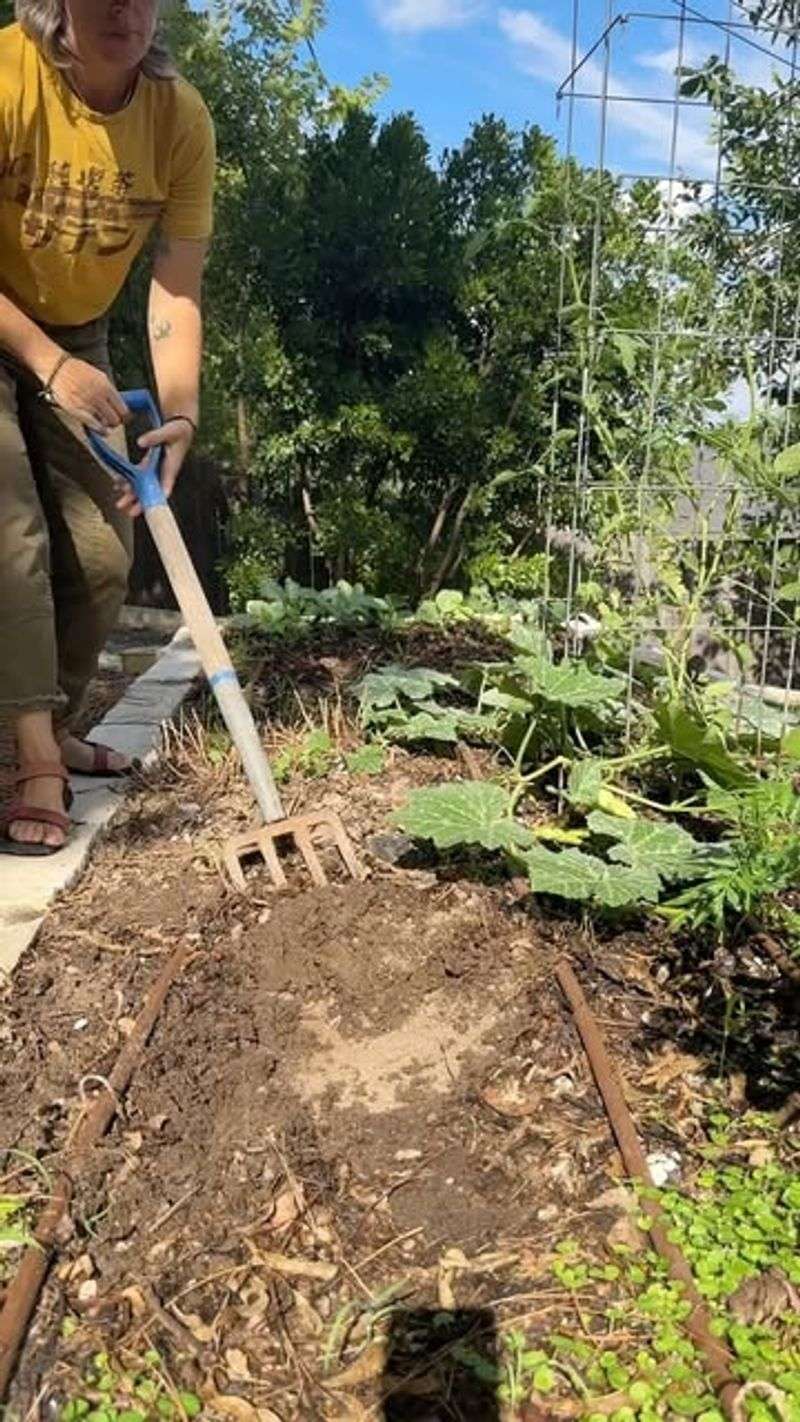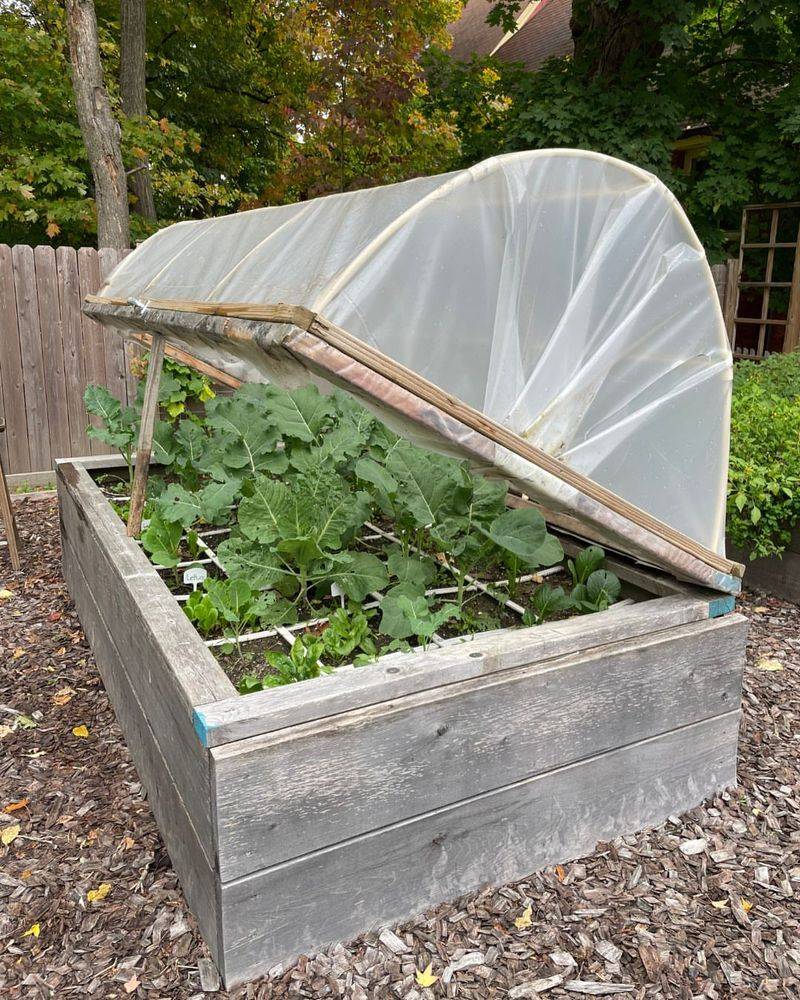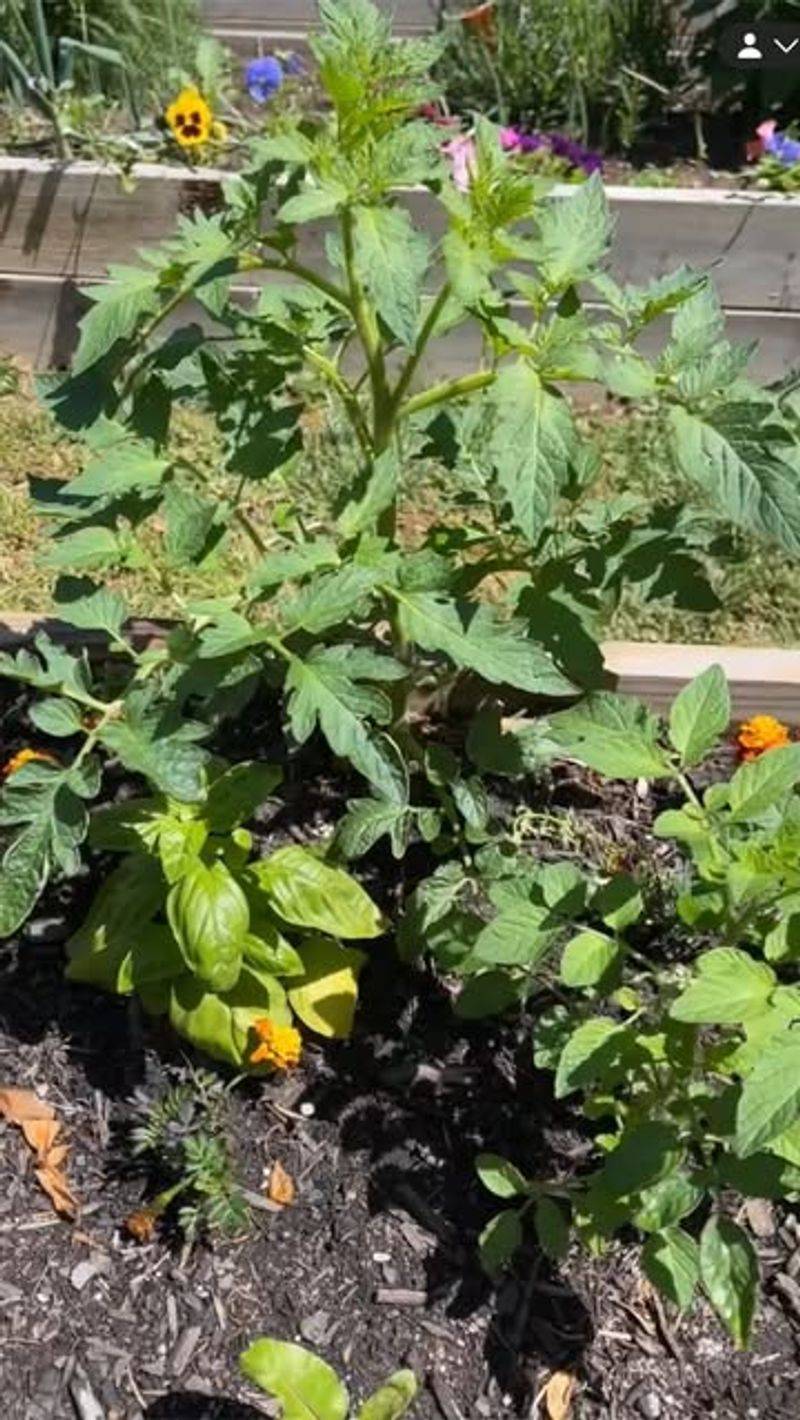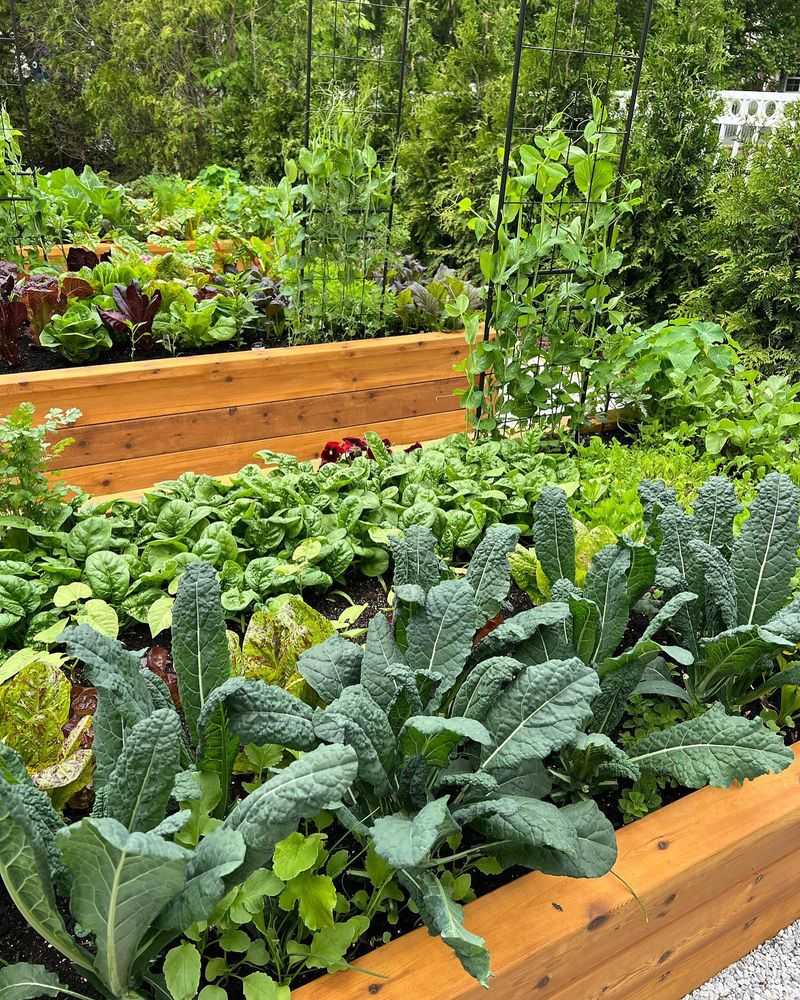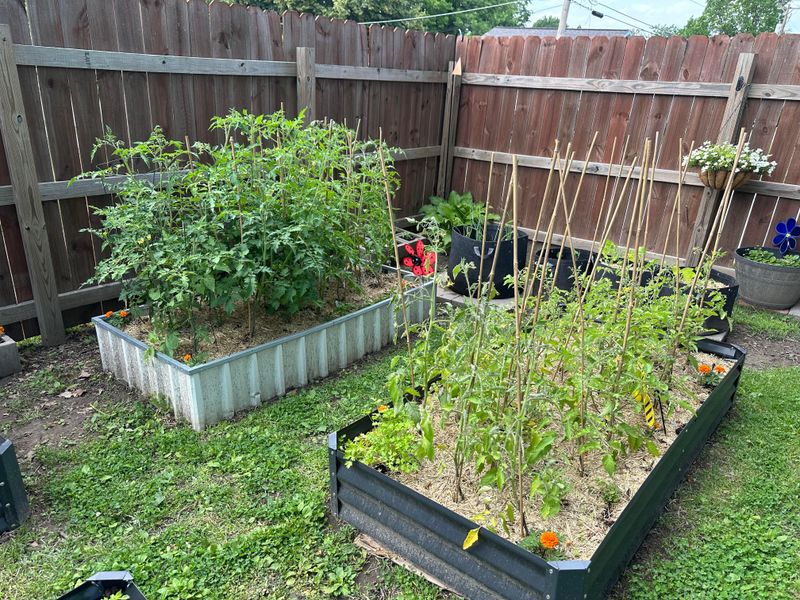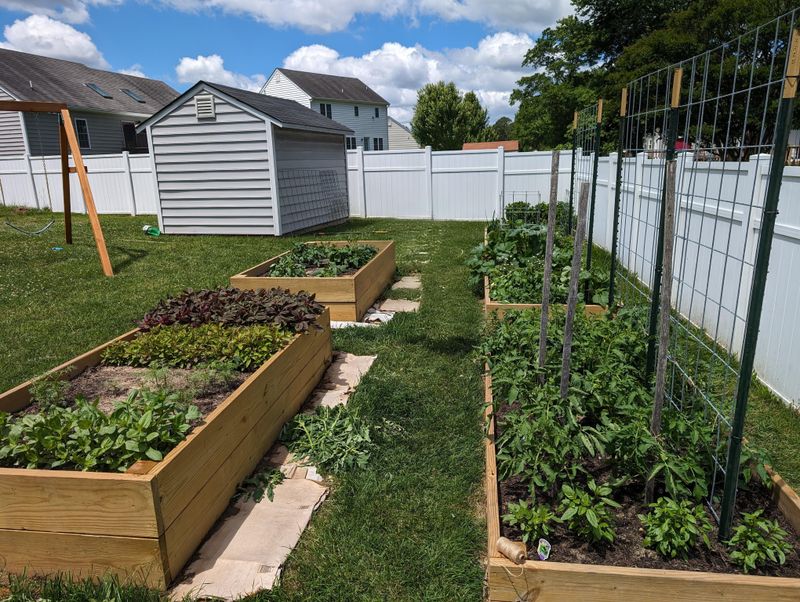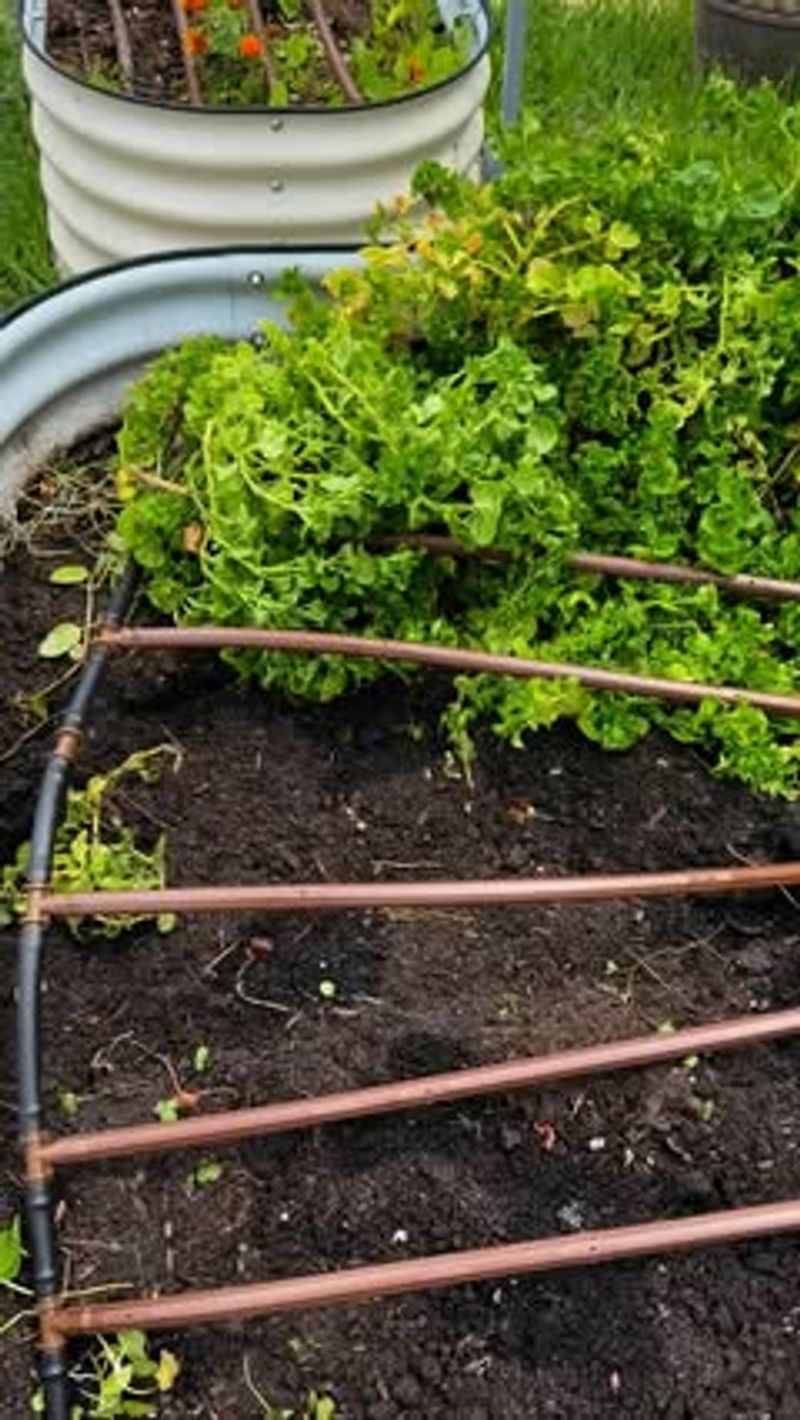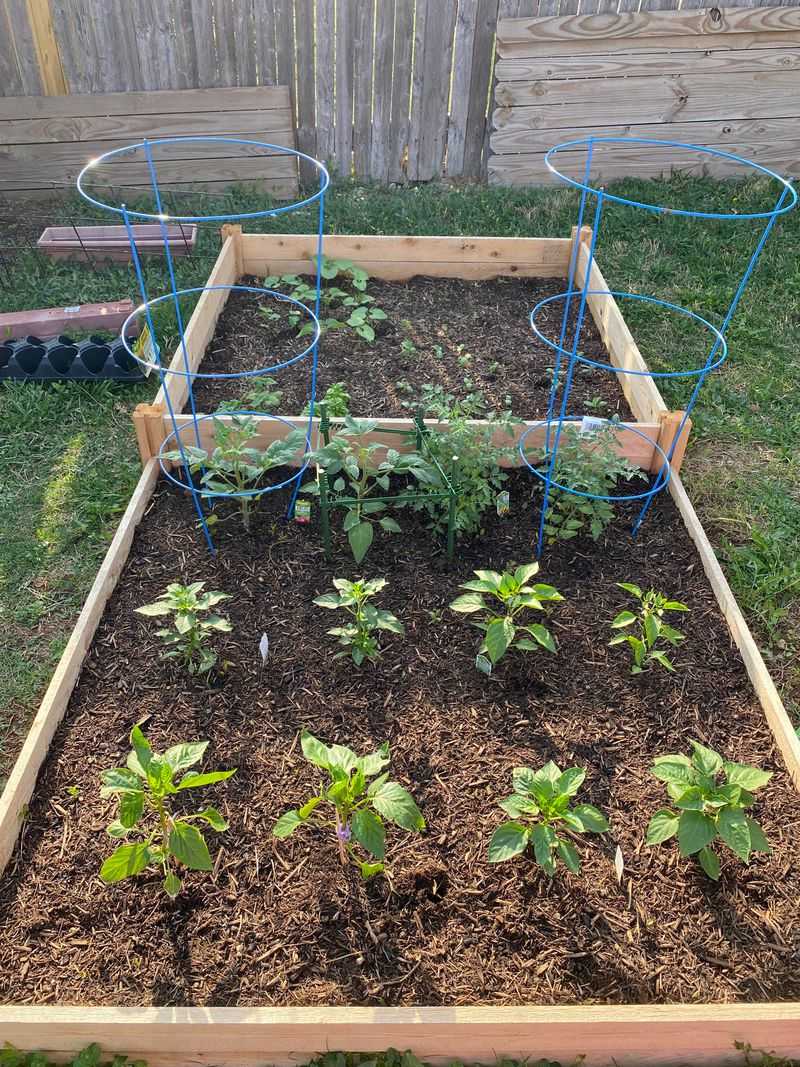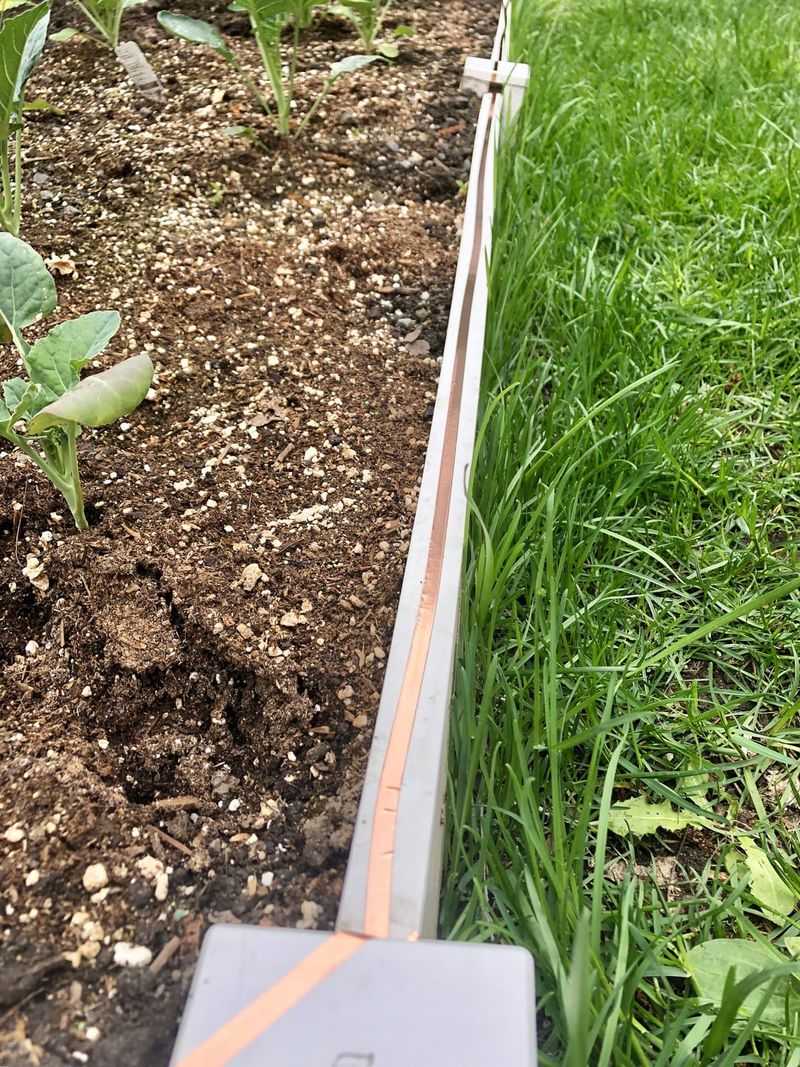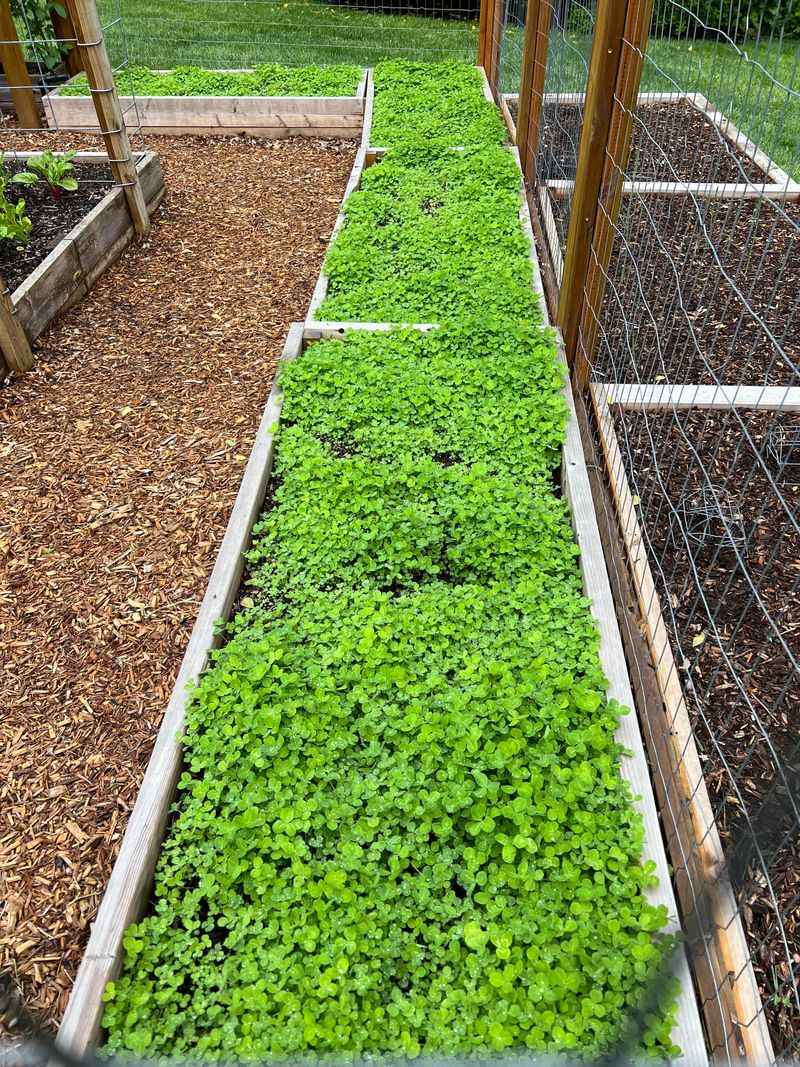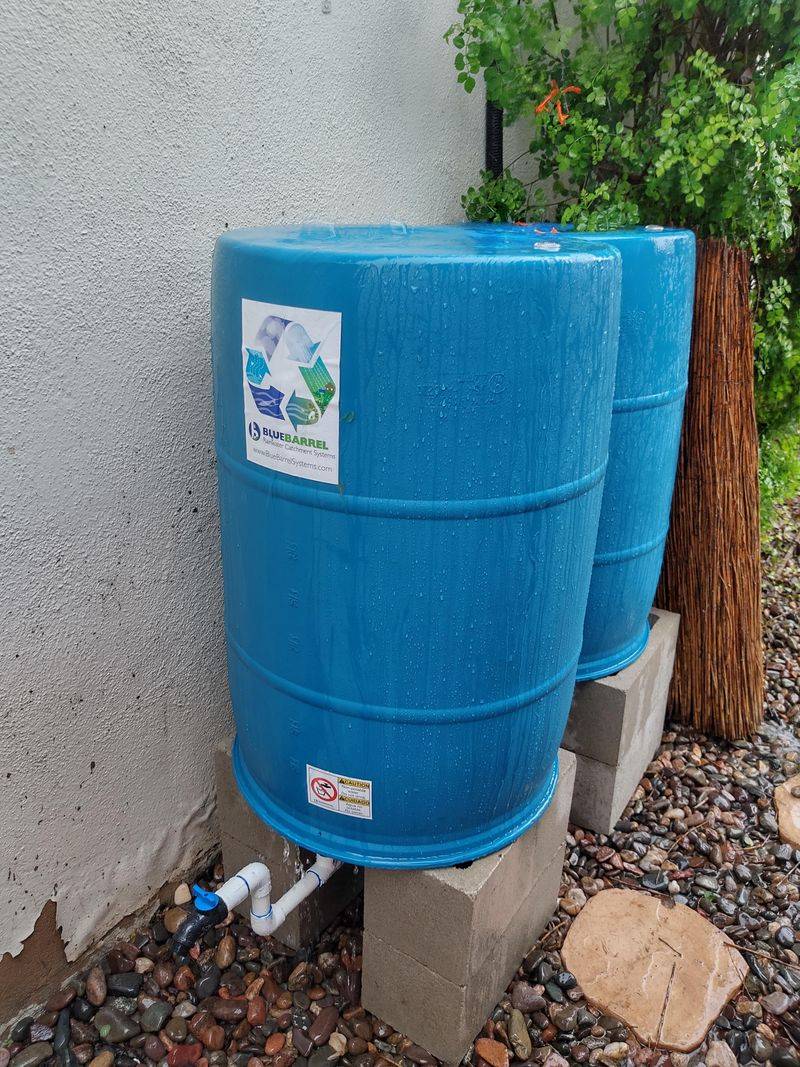I’ve learned the hard way that August sun can be brutal on raised beds here in Michigan. But with a few smart tricks, they can stay healthy and productive through the heat.
Local gardeners have some clever habits that really make a difference—like simple covers and timing their watering just right. I’ve picked up these tips from neighbors, and they’ve saved me more than once.
If you’ve got raised beds, now’s the time to give them a little extra love!
1. Mulch Deeply
Adding a thick 3-inch layer of straw mulch keeps soil temperatures regulated during Michigan’s fluctuating August weather. This natural insulation prevents moisture evaporation when temperatures spike.
Many Michigan gardeners collect fallen leaves now to create their own mulch supply. The protective barrier also stops weeds from stealing nutrients your vegetables need for final growth spurts.
2. Install Shade Cloth
Draping 30-40% shade cloth over sensitive crops provides relief from intense afternoon sun. Lettuce, spinach and other cool-season vegetables appreciate this protection during Michigan’s hottest days.
Set up the cloth on a simple PVC frame that allows air circulation while blocking harsh rays. Great Lakes gardeners find this especially helpful when August temperatures climb unexpectedly high.
3. Water Deeply, Not Daily
Switching to deep, infrequent watering encourages roots to grow downward seeking moisture. Michigan gardeners typically water raised beds just twice weekly in August, applying about one inch each time.
Early morning watering reduces evaporation loss while giving plants time to dry before evening. This smart schedule helps prevent fungal diseases common in Michigan’s sometimes humid late summer conditions.
4. Row Covers Ready
Keeping lightweight row covers handy helps Michigan gardeners respond quickly to unexpected temperature drops. These breathable barriers trap daytime heat while protecting tender plants from cool nights.
Row covers also create a physical barrier against insect pests that multiply rapidly in August. Many Michigan vegetable growers use hoops made from flexible PVC pipe to support the covers above plants.
5. Strategic Companion Planting
Adding marigolds and nasturtiums between vegetables creates natural pest protection. Their strong scents confuse insects looking for favorite crops in Michigan’s August garden abundance.
Basil planted near tomatoes improves flavor while repelling hornworms. Throughout Michigan, experienced gardeners use these companion relationships to reduce pest problems without chemicals during late summer’s pest pressure peak.
6. Harvest Regularly
Picking vegetables as soon as they ripen prevents overripe produce from attracting pests. Daily harvests in August also encourage plants to continue producing rather than setting seed.
Michigan gardeners often schedule morning harvests when vegetables contain the most moisture and nutrients. This simple habit extends the productive season of raised beds while reducing pest problems throughout the Great Lakes region.
7. Apply Organic Fertilizer
A mid-August application of fish emulsion or compost tea provides nutrients for late-season growth. Heavy-feeding crops like tomatoes and peppers particularly benefit from this boost during Michigan’s extended growing season.
Applying fertilizer in liquid form ensures faster uptake when plants need quick nutrition. Many Michigan gardeners maintain this practice to maximize harvests before the first frost approaches their raised beds.
8. Monitor Soil Moisture
Using a simple moisture meter helps Michigan gardeners maintain ideal growing conditions. August’s fluctuating weather patterns can quickly dry out raised beds, especially when surrounded by heat-reflecting materials.
Checking moisture levels 4-6 inches deep provides accurate information about root zone conditions. Throughout Michigan’s diverse growing regions, this practice prevents both drought stress and overwatering during unpredictable late summer weather.
9. Install Drip Irrigation
Setting up drip irrigation delivers water directly to plant roots while keeping foliage dry. This efficiency reduces water waste and prevents fungal diseases during Michigan’s sometimes humid August days.
Connecting the system to a timer ensures consistent watering even during vacation absences. Across Michigan’s Upper and Lower Peninsulas, gardeners appreciate this hands-off approach during busy late summer schedules.
10. Prune Strategically
Removing yellowing leaves and overgrown branches improves air circulation through dense plantings. This simple maintenance prevents disease spread during Michigan’s occasionally humid August weather patterns.
Pruning tomato suckers and thinning crowded plants redirects energy to fruit production. Michigan gardeners find this especially important as the growing season begins its final productive push before fall arrives.
11. Apply Beneficial Nematodes
Introducing microscopic beneficial nematodes controls soil-dwelling pests naturally. These tiny organisms target problematic grubs and larvae without harming plants or beneficial insects in Michigan gardens.
Applied with a simple watering can during evening hours, nematodes quickly establish themselves. Many Michigan raised bed enthusiasts use this biological control method to avoid chemical pesticides during August’s peak harvest season.
12. Create Pest Barriers
Surrounding raised beds with copper tape prevents slug and snail damage to tender crops. The natural electrical charge deters these pests that thrive during Michigan’s occasionally damp August conditions.
Diatomaceous earth sprinkled along bed edges creates another effective barrier against crawling insects. Throughout Michigan’s garden communities, these physical deterrents protect harvests without introducing harmful chemicals to food-growing spaces.
13. Plant Cover Crops
Seeding buckwheat or clover in harvested sections prevents soil erosion and suppresses weeds. These quick-growing plants also add organic matter when turned under before Michigan’s first frost arrives.
Cover crops attract beneficial insects that help control garden pests naturally. Many Michigan gardeners use this technique to transition summer garden sections toward fall while maintaining soil health in their raised beds.
14. Collect Rainwater
Setting up rain barrels captures free water for garden use during August’s sometimes dry periods. Collected rainwater lacks the chlorine found in municipal supplies, making it ideal for sensitive vegetables.
Positioning barrels near raised beds creates an efficient watering system. Across Michigan’s diverse climate zones, this sustainable practice helps gardeners maintain consistent moisture levels even during unpredictable late summer weather patterns.
15. Add Compost Top Dressing
Spreading a thin layer of finished compost rejuvenates soil without disturbing plant roots. This gentle feeding technique provides slow-release nutrients perfect for Michigan’s extended growing season.
The dark compost also helps retain soil moisture during August’s hottest days. Throughout Michigan’s garden communities, this practice maintains soil fertility while supporting the final productive push before autumn arrives.

